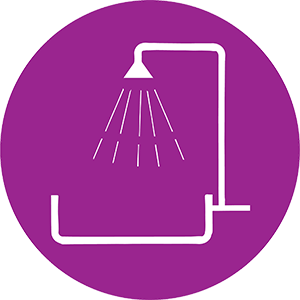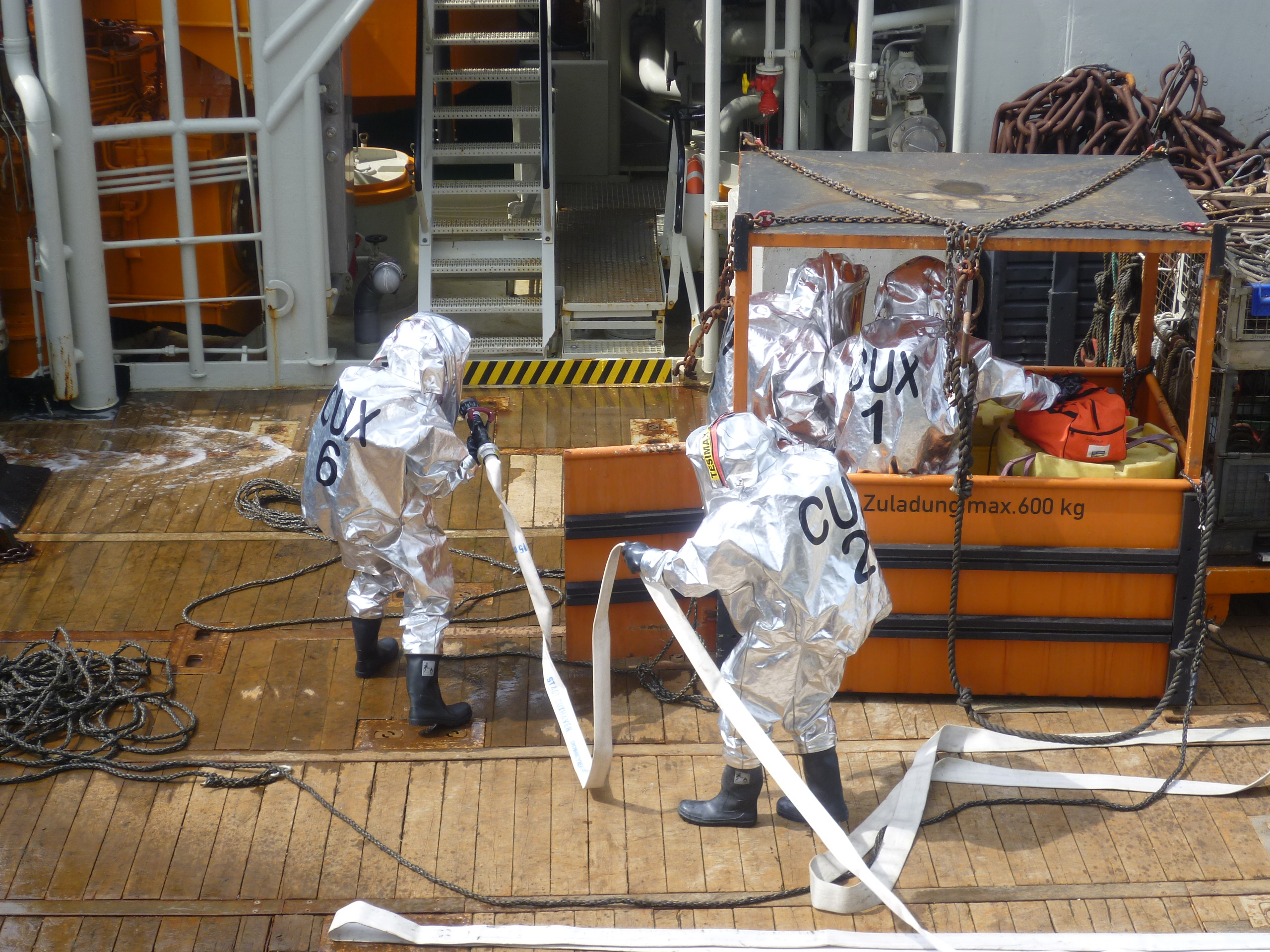Emergency Decontamination and Mass Decontamination


Emergency Decontamination
To prevent further harm to (possibly) contaminated persons, they have to get decontaminated as quickly as possible. The very first action is the undressing of every piece of (upper) clothing. This stops further contamination of the skin. At the same place, people have to deposit their personal belongings.
Contaminated skin should not be warmed up (e.g. showering “lukewarm” only). Warming up would help to open the skin pores and thus help to incorporate the HNS. The skin contamination has to be removed as quickly as possible without further spreading on the skin (e.g. not rubbing but swapping).
The best way is to slowly rinse the contaminated skin with slightly warmed water, either by rescue / medical personnel or the person itself (e.g. showering). Orifices (e.g. mouth, nose, ears) and injured parts of the body have to be protected to prevent incorporation of HNS or decontamination agents.
Following decontamination, the further medical care including insurance of the transportability can commence. Because of their unacceptable risk to other people, some extremely dangerous HNS like chemical warfare agents or highly infectious biological agents require a thorough decontamination on scene before any medical treatment.

Notice that only patients who have been decontaminated will be transported. Confirm that receiving hospitals are informed about the situation and the following facts:
- type of contamination (suspected contaminant and contaminated surface),
- degree of contamination,
- rough duration of the impact and
- decontamination measures.
All these measures can be summarized under the term emergency decontamination. The emergency decontamination must be ready before commencing any rescue operation as well.
Mass Decontamination
If there is a large number of unprotected persons affected by HNS and thus contaminated, rescue personnel has to establish a mass decontamination. This means to optimize the process to handle plenty of people at the same time, for example by using an improvised showering gate or showering tents instead of a mobile single person shower.
The process of mass decontamination as well as the process of emergency decontamination follow the same sequence and the same principles as the decontamination of rescue personnel.
